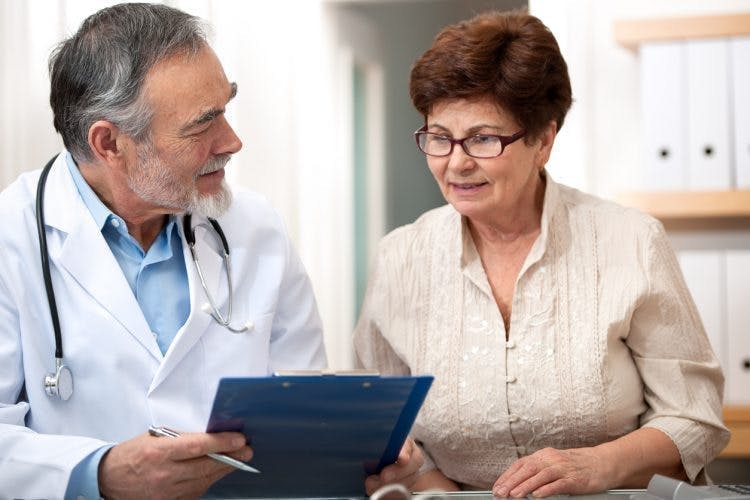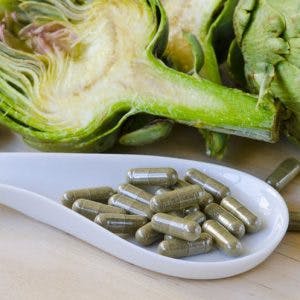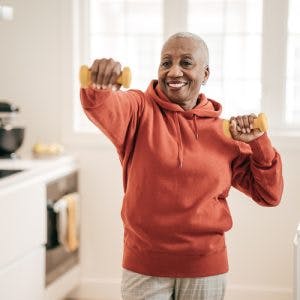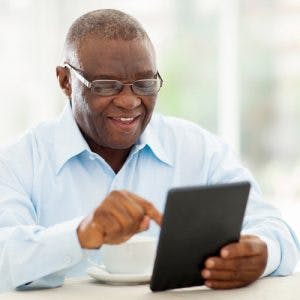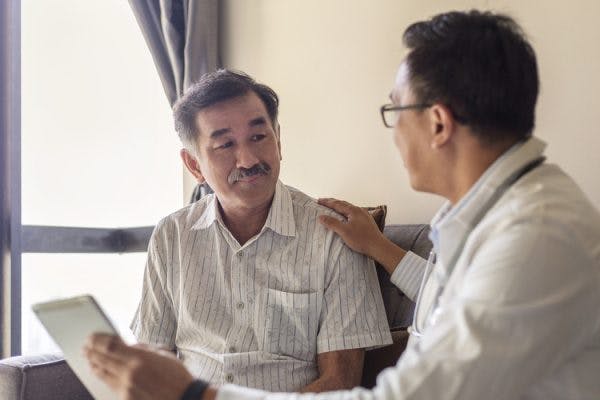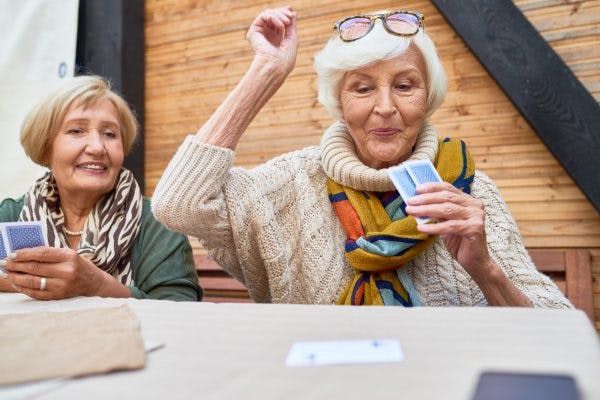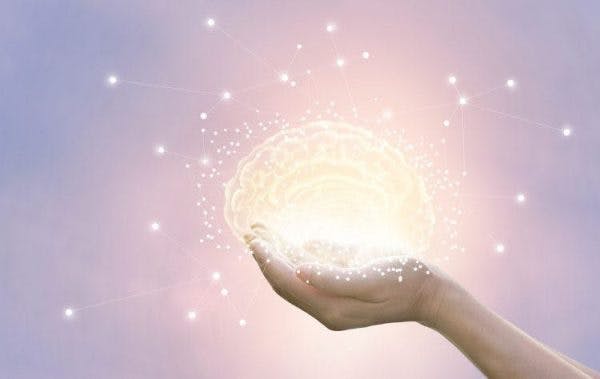Can stroke be cured? The short answer is yes, stroke can be cured — but it occurs in two stages. First, doctors administer specific treatment to restore normal blood flow in the brain and stop further damage. Then, the patient participates in rehabilitation to cure the secondary effects that result from the stroke.
While it’s impossible to restore damaged brain tissue, rehabilitation teaches healthy parts of the brain how to compensate for the damaged areas. In this article we will discuss how this process works and how to cure the aftermath of a stroke.
How Stroke Is Cured During Initial Treatment
A stroke is considered to be a “brain attack.” Stroke occurs when the blood supply in the brain is compromised by either an obstructed artery (ischemic stroke) or burst artery (hemorrhagic stroke).
To cure an ischemic stroke, doctors must dissolve the blood clot through either drugs or surgery. Common drugs used to cure ischemic stroke include tPA (tissue plasminogen activator), antiplatelets, or anticoagulants. These medications work to thin the blood, dissolve the clot in the brain, and prevent new clots from forming.
When drugs cannot be used to treat ischemic stroke, doctors may need to manually remove the clot through surgery. Instead of opening the skull, however, doctors can often go through an artery in the leg to reach the clot in the brain (a type of surgery called a mechanical thrombectomy or embolectomy).
A hemorrhagic stroke often requires an invasive type of surgery to repair the burst blood vessel in the brain. Usually, part of the skull is removed so that doctors can access the ruptured artery (a type of surgery called a craniotomy). Invasive surgeries carry a higher risk but are often necessary to stop a hemorrhagic stroke.
Until the stroke has been treated, the damage sustained by lack of blood flow continues to worsen. This is why quick detection of stroke symptoms and timely treatment is crucial. Take time to review these stroke warning signs to protect yourself and your loved ones.
When stroke warning signs are detected and medical intervention begins, doctors are able to help treat the cause of the stroke and minimize damage to the brain. Once the stroke itself has been cured, the next step on the road to recovery awaits.
How to Cure the Secondary Effects of Stroke
Every stroke is different because it can affect different areas of the brain. Each area of the brain has its own unique function, and level of stroke severity will vary depending on many factors. As a result, each patient experiences secondary effects of stroke differently.
The secondary effects of stroke can be motor (movement related), cognitive, and sensory. This can have a huge impact on activities of daily living and a survivor’s independence. Thankfully, rehabilitation helps patients regain function that has been impaired by stroke. For instance, common goals during stroke rehabilitation include regaining the ability to walk, talk, and carry out daily tasks.
In many cases, partial or even full recovery is possible when a long-term, intensive rehabilitation program is pursued. Although dead brain cells cannot be recovered, the brain can still recruit healthy cells to compensate for the damaged areas by rewiring neural pathways.
This process is called neuroplasticity, which is the brain’s natural ability to rewire itself and use healthy brain tissue to take on lost functions. Neuroplasticity is the single most important concept for curing stroke and is the focus of rehabilitation.
Neuroplasticity is activated by experience and massed practice, which requires repetition and consistency. Each time a task is practiced, it stimulates the brain and strengthens the neural connections responsible for that task. This is how children learn how to walk, write, and talk.
The same concept applies to stroke rehabilitation. When a stroke survivor struggles with leg movement, for example, they can work to regain function by practicing leg exercises on a consistent basis. This helps improve the brain’s ability to send signals to the leg that tell it when to move, improving efficiency and overall function.
Rehabilitation Focuses on Rebuilding All Skills
Massed practice doesn’t just apply to physical movement, however. Most secondary effects of stroke can be cured or improved by consistently practicing associated skills. This is why working closely with your therapy team is so important following a stroke.
For example, stroke patients that struggle with speech difficulties can work with a speech-language pathologist (SLP) to improve communication. This rehabilitation expert teaches patients various speech therapy exercises that help the brain to regain the skill of language. Additionally, SLPs can provide exercises and techniques to help cure dysphagia, or difficulty swallowing, which is a common impairment following stroke.
Previously we mentioned that regaining the ability to walk is a common goal during stroke recovery. To achieve this, stroke patients work alongside physical therapists to practice gait training exercises. Physical therapists will also work with you to improve skills such as balance, muscle strength, and coordination.
Another rehab expert, your occupational therapist, will provide exercises and activities to help you with fine motor skills and activities of daily living such as dressing, bathing, and self-care. They can also recommend adaptive equipment, therapy tools, and other home modifications to maximize your safety and independence.
The “cure” for regaining the ability to walk or move independently is not found in a pill or medication. Rather, the cure for stroke and the resulting secondary effects requires your hard work and the brain’s adaptive abilities. Repetition and consistency are the key to stroke recovery.
Avoid Snake Oil “Cures”
It’s worth repeating that there is no magic pill that can cure the secondary effects of stroke. All impairments that occur after stroke are the result of neurological damage to the brain. No pill or Chinese herbal remedy can revive lost brain tissue. Only a dedicated stroke rehabilitation regimen can cure the effects of stroke.
However, some supplements are worth considering, especially if there is clinical evidence that supports their use during stroke recovery. Before you consider adding supplements to your diet, however, consult your doctor. Your doctor is familiar with your preexisting health conditions and can warn you of adverse side effects.
For instance, the herbal supplement ginko biloba is touted for its memory-boosting effects. However, it’s a natural blood thinner, which means anyone with a history of hemorrhagic stroke should avoid it.
Be careful with new supplements. Always check your sources and make sure that it will not interact with your current medication or exacerbate preexisting health conditions. Your doctor is the expert on your medications and medical management overall, so they should be consulted before adding any supplements or new treatments to your regimen.
Navigating the Road to Recovery
The cure for stroke does not lie in a pill, but rather in a consistent rehabilitation program that’s pursued long-term. The brain recovers after a stroke through neuroplasticity, which is activated by experience and repetition.
Survivors of stroke need to practice the skills they want to improve to rewire the brain and gain independence. There is no short cut or pill for that, which means the road to stroke recovery is a long journey.
Fortunately, there is good news. Stroke patients that adhere to consistent, long-term rehabilitation plans can make significant recoveries. It can feel overwhelming to decide how to proceed with rehabilitation, so we’ve included a free ebook loaded with more stroke recovery tips at the end.
We hope this article has helped you understand how the brain heals after stroke and what you can do to help yourself recover. The true “cure” for stroke consists of hard work, consistency, and determination.

